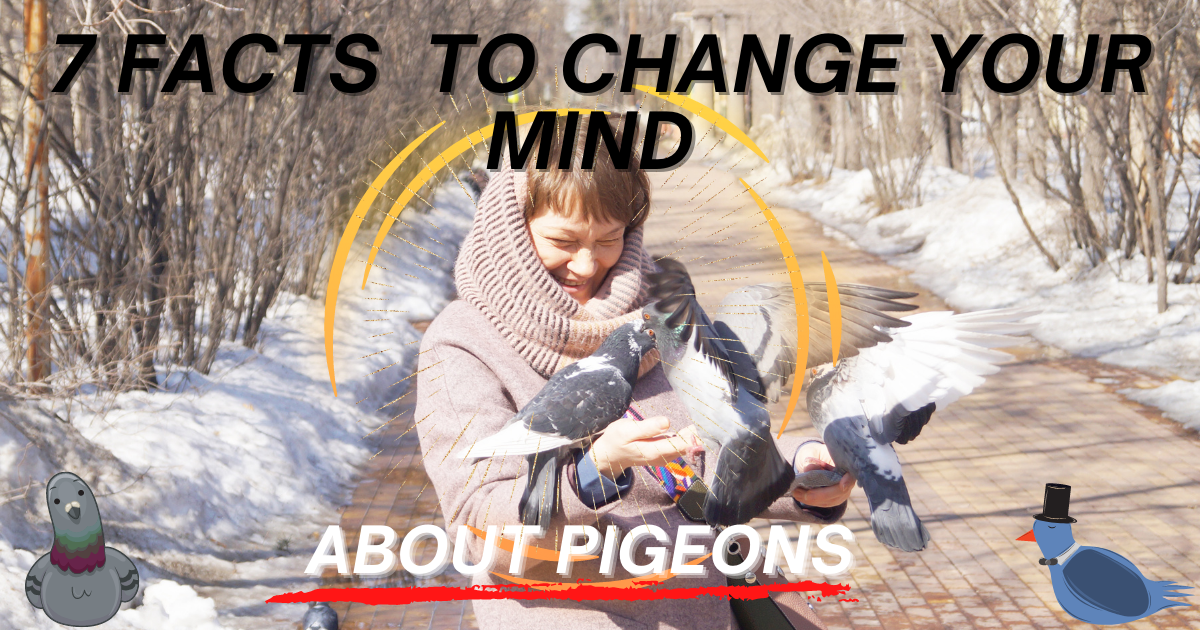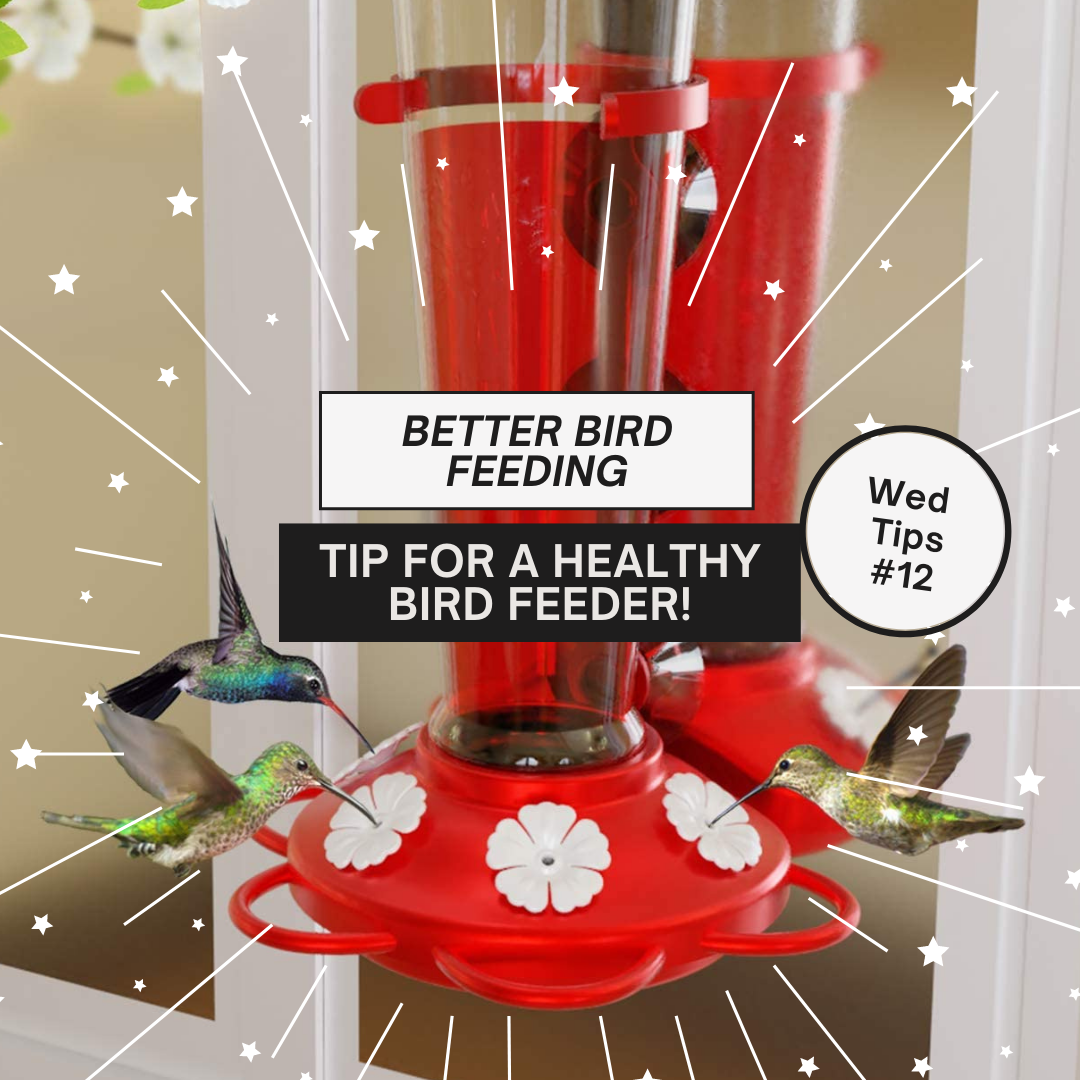
Bird-feeding has become the second biggest hobby in the United States, #1 being golf. Both hobbies take us into the outdoors where we have yearned to be ever since the urbanisation of our environment. There is nothing like seeing a brightly coloured bird pecking at our window bird-feeder to return us to the feel of nature.
Bird feeding can be done year-round, all over the world. So naturally, many myths have grown up around it, some of which are bad for our feathered friends’ feeding habits and can even harm them.
Let’s debunk a few myths and find out the true facts so that we can stay on the up and up with our avian guests.
1. BIRD-FEEDING GOES AGAINST NATURE, AND MAKES BIRDS DEPENDENT ON US
FALSE.

According to research conducted at Oregon State University, when we put out bird feeders, the birds do not become dependent on us. “Our study suggests that putting out food for small birds in winter will not lead to an increased dependence on human-provided food," says Jim Rivers, an animal ecologist with the OSU College of Forestry.
Birds only get about 25% of their food from bird feeders, the rest they find in the wild. They have their own “biological clocks” which tell them when it’s time to fly south (or back up north). Birds are able to read the time of year by the quality of the daylight and the feel of the weather.
So keep your feeders full. The only reason to stop filling bird-feeders is if you are planning on moving away. Parting with the bird feeder should be gradual. Fill the them a little less at a time so the birds know they should be looking elsewhere for their daily snack.
2. LEAVING OUT CRUSHED EGGSHELLS IS GOOD FOR THE BIRDS
TRUTH

Birds love crushed eggshells as it is a good source of calcium. Especially before the mating season or migration, it keeps them strong enough to make the great flight, or have a safe and healthy nesting period.
The bones and teeth of both humans and birds need high amounts of calcium. Not all birds can find it easily – so giving them a helping hand can be lifesaving.
A very quick “Eggshell recipe.”
It’s not enough just to leave eggshells outside, they must be baked to remove the danger of salmonella or other dangerous substances.
Turn the oven on to 480°F or 250°C. Wash the shells off and spread them on a cookie sheet. Bake the shells for about 10 minutes, don’t let them get brown. Crush them into small pieces. Then place the eggshells on the ground or add them to your bird seed mix.
Adding sesame seeds to the whole shebang is an extra calcium boon.
Almond butter is high in calcium as well. Offering suet too adds a great protein source and that, my friends, is the winning combo.
3. IN THE WINTER, BIRDS EAT SNOW FOR WATER
FALSE

Water is as important as food. In winter, backyards with running water will see more winter avian visitors than those without. When birds eat snow, they burn a lot of calories, precious calories they need to survive the cold season.
Having a heated water fountain in your garden is not only a beautiful and meditative addition but also a huge attraction for the birds that don’t migrate.
4. GRAPE JELLY IS BAD FOR BIRDS AND PEANUT BUTTER CAN CAUSE THEM TO CHOKE
FALSE

Grape jelly is great for birds but it must be made with real sugar, not one of the low-calorie products for weight loss. Woodpeckers, orioles, tanagers and many other birds love grape jelly – but they need the real thing, not aspartame. If they eat substances with artificial sweeteners, they might be fooled into thinking that they have had a good calorie intake when in fact their body has no energy. This could be dangerous for them.
The same goes for hummingbird nectar. Make them the recipe (CONNECT LINK) accordingly. No fake red, or red dye. They will thi
Food that can left out for birds:
-
 Grape jelly, peanut-butter
Grape jelly, peanut-butter -
 Half an orange
Half an orange -
 Apples
Apples -
 Grapes
Grapes -
 Any type of berry.
Any type of berry.
Food that is toxic for birds:
-
 Bread, fresh or stale, has no real nutritional value. Also, if it goes moldy, this can harm them.
Bread, fresh or stale, has no real nutritional value. Also, if it goes moldy, this can harm them.
-
 Chocolate and caffeine. Chocolate contains theobromine, which is anathema to birds, just like to dogs and cats. They don’t metabolize chocolate efficiently as humans do and so it can damage their heart, kidneys and central nervous systems.
Chocolate and caffeine. Chocolate contains theobromine, which is anathema to birds, just like to dogs and cats. They don’t metabolize chocolate efficiently as humans do and so it can damage their heart, kidneys and central nervous systems.
5. IF A LITTLE BABY-BIRD FALLS, IT SHOULD NEVER BE PLACED BACK IN ITS NEST
FALSE
UNLESS THE BABY IS A FLEDGLING.

Some baby birds are “in training.” The parents are still around teaching them to survive on their own. So, if the bird is capable of hopping or grasping your finger, best let him be. Fear not, his parents are around somewhere, making sure he’s doing his homework!
But if the baby is a newborn with hardly any feathers and he cannot walk or flit, it’s best to put it back in its nest as soon as possible. Their parents will then take care of it, and sensing your touch will not stop them.
If the nest has been destroyed and you are sure the bird is orphaned, it’s best to take the little one to a wildlife rehabilitation center.
6. EVERY BIRD LIKES TO EAT AT A DIFFERENT LEVEL
TRUTH
Birds are very specific where they choose their place at the table. Which is a way to choose the right bird-feeder for them
- At ground level, enjoying seeds or eggshells or seeds that have fallen from upper feeders, you will find mourning doves, sparrows, towhees and juncos.
- At table level you will find cardinals, finches and jays.
- A little higher, as you hang your tube feeders – titmice, goldfinches and chickadees.
- And way up there are the woodpeckers, nuthatches and wrens.
Choose from our best-selling bird-feeders here!
AND NOW... FOR SOME FUN FACTS!
- Stop thief!
In the 1950s, a group of British blue tits were following milk delivery trucks and stealing milk by piercing the bottle tops with their beaks.
- The Flatulating Technique

Brace yourselves: Flitting around the woodlands of Australia, the Bassian thrushes (Zoothera lunulata) found a unique way to get their food delivered: farting. The burst of gas makes the worms writhe in olfactory agony, and that writhing is what gets the poor worms detected, which is when the birds grab them and enjoy the meal.
- Beak-service
The beak is a result of the bird’s eating evolution. For instance, some birds developed hooked beaks to kill animals and eat their meat. Some birds have cone-shaped beaks which is the prefect tool for cracking open seeds and nuts and eating its contents.
- Blue Jays are the local alarm system for other birds

One of the main predators for the Blue Jay (along with other birds) is the Red-Shouldered Hawk. Jays are so smart that they can imitate the sound of hawks when they are spotted. This early alert protects many other birds from becoming lunch. Blue Jays can sometimes use this to their advantage. For example, they will make hawk sounds even when none are present. Why? So that other birds fly away, leaving the Blue Jay first in line to eat.
- Birds with an appetite
A green woodpecker can eat up to 2000 ants in one day.
- The commonest bird

The most common bird in the world is … the chicken.
- Birds have evolved from dinosaurs.
Birds evolved from a group of carnivorous dinosaurs called theropods. That's the same group that Tyrannosaurus rex belonged to, although birds evolved from small theropods, not huge ones like T. rex. These ancient birds looked quite a lot like small, feathered dinosaurs and they had much in common. Their mouths still contained sharp teeth. But over time, birds lost their teeth and evolved beaks. Imagine going for a walk and coming across a pigeon with teeth!





3 comments
Nancy
Thank you for the bird-feeding facts! I plan to expand the seed and nut diet I supply to add berries, almond butter, & egg shells.
The bird feeder I bought from you is fantastic: sturdy, designed to give a great view of the birds, and with an easy-to-refill the tray. I am surprised at the level of pleasure I receive from watching the birds come to my dining room window. Initially I was worried about whether those section cups would hold, but they do a great job. I’m a delighted customer!
Nancy
Thank you for the bird-feeding facts! I plan to expand the seed and nut diet I supply to add berries, almond butter, & egg shells.
The bird feeder I bought from you is fantastic: sturdy, designed to give a great view of the birds, and with an easy-to-refill the tray. I am surprised at the level of pleasure I receive from watching the birds come to my dining room window. Initially I was worried about whether those section cups would hold, but they do a great job. I’m a delighted customer!
Adam Beans
Thanks for the tip and hope I can learn more about bird watching.
Leave a comment
All comments are moderated before being published.
This site is protected by hCaptcha and the hCaptcha Privacy Policy and Terms of Service apply.